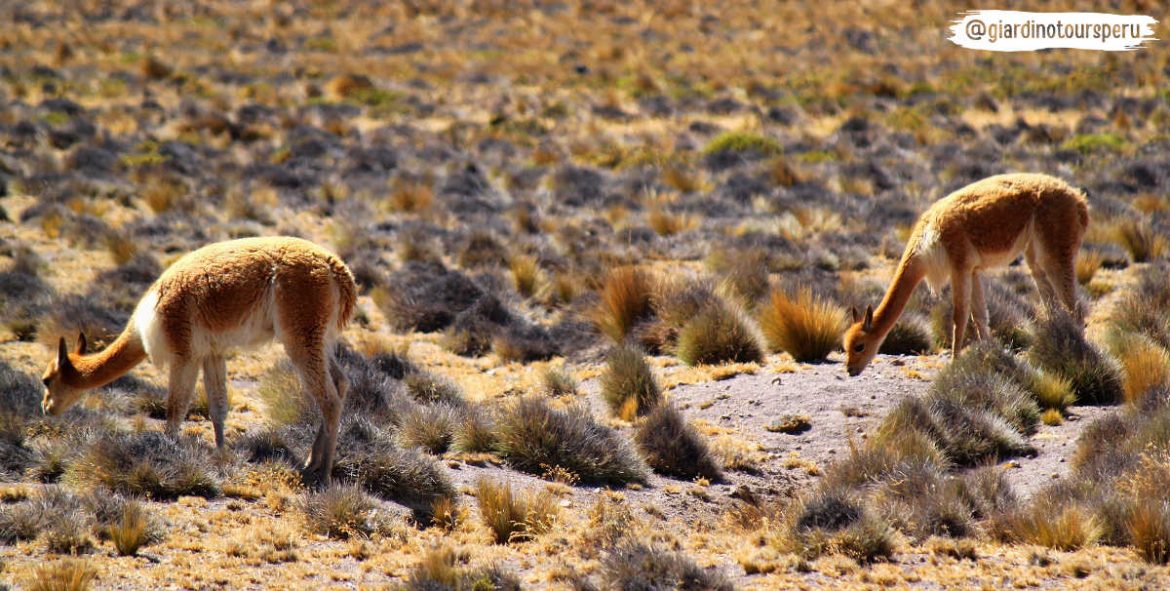The Salinas and Aguada Blanca National Reserve is one of the most important natural attractions of the city of Arequipa. This attraction, next to the Colca Valley, are the two most impressive ecosystems in the region.
Salinas and Aguada Blanca National Reserve
The Salinas and Aguada Blanca National Reserve was established in 1979 as a place for the protection of vicuñas, but today it also represents the main water reserve of the city of Arequipa and surroundings.
The reserve is distinguished by the presence of the majestic volcanoes Ubinas, Pichupichu, Misti and Chachani on the southwest part, and by the snow-capped Chuccura and Huarancante on the north side and has an area of 366,936 hectares. And an altitude between 3500 and 6000 meters.
The high Andean plains, dotted with beautiful lagoons and wetlands, complete the icy landscape of most of the territory inhabited mainly by South American camelids and by a large number of terrestrial and aquatic birds.

Objetive
Protect habitats that offer optimal conditions for the development of populations of vicuña, taruca, common parihuana, Andean parihuana and James parihuana. Protect forests from queñual.
Fauna/Flora
The vertebrates are represented by 207 species, of which 37 are mammals and 158 birds. Also the presence of 5 species of reptiles, 4 amphibians and 3 fish has also been reported. The herbivores characteristic of the fauna are the camelids of South America: Llama, alpaca, vicuña and guanaco.
Also here you will find the Tarucas, viscachas, puma, the andean cat, the andean fox, etc. Among the resident birds we have the Andean huallata or goose, the mountain duck and the flamingos or parihuanas.
And talking about the flora of the Reserve, you will find about 358 species of plants.
The Salinas and Aguada Blanca National Reserve has a good network of roads that allow access to much of the protected natural area.
An ideal and easy way to observe part of the Natural Reserve (Pampa cañahuas area) is during the 2 days excursion to the Colca canyon.
There are also other excursions to the Reserve such as a visit to the Salinas lagoon, the Mauca rock formations or visit to Pillones and Puruña in the area of Pampa Cañahuas, the cave paintings of Sumbay and more.
Clima
The Salinas and Aguada Blanca National Reserve has very low average temperatures ranging from 2° to 8° C. Extensive thermal fluctuations occur, both day and night, as well as between shade and sun exposure. It has annual precipitation averages of 200 to 600 mm, mainly from January to March, a period in which 65 per cent of the rains fall. Frost occurs almost all year round and can reach -20°C.
All these characteristics, together with their capricious rock formations, their archaeological remains, the rich living culture of their present inhabitants and their easy accessibility, make it one of the most valuable protected natural areas of the country.
The megadiversity of the reserve makes it one of the treasures of Arequipa region.
Peru is beautiful and megadiverse!
Giardino Tours – Blog.
@GiardinoToursperu
#ItravelwithGiardino #OneTripManyExperiences
Links that may be interesting:
Tips for a Responsible Peru Travel Experience!
Arequipa: The stone city Choqolaca
Santa Catalina Monastery: What you need to know for your Tour in Arequipa

